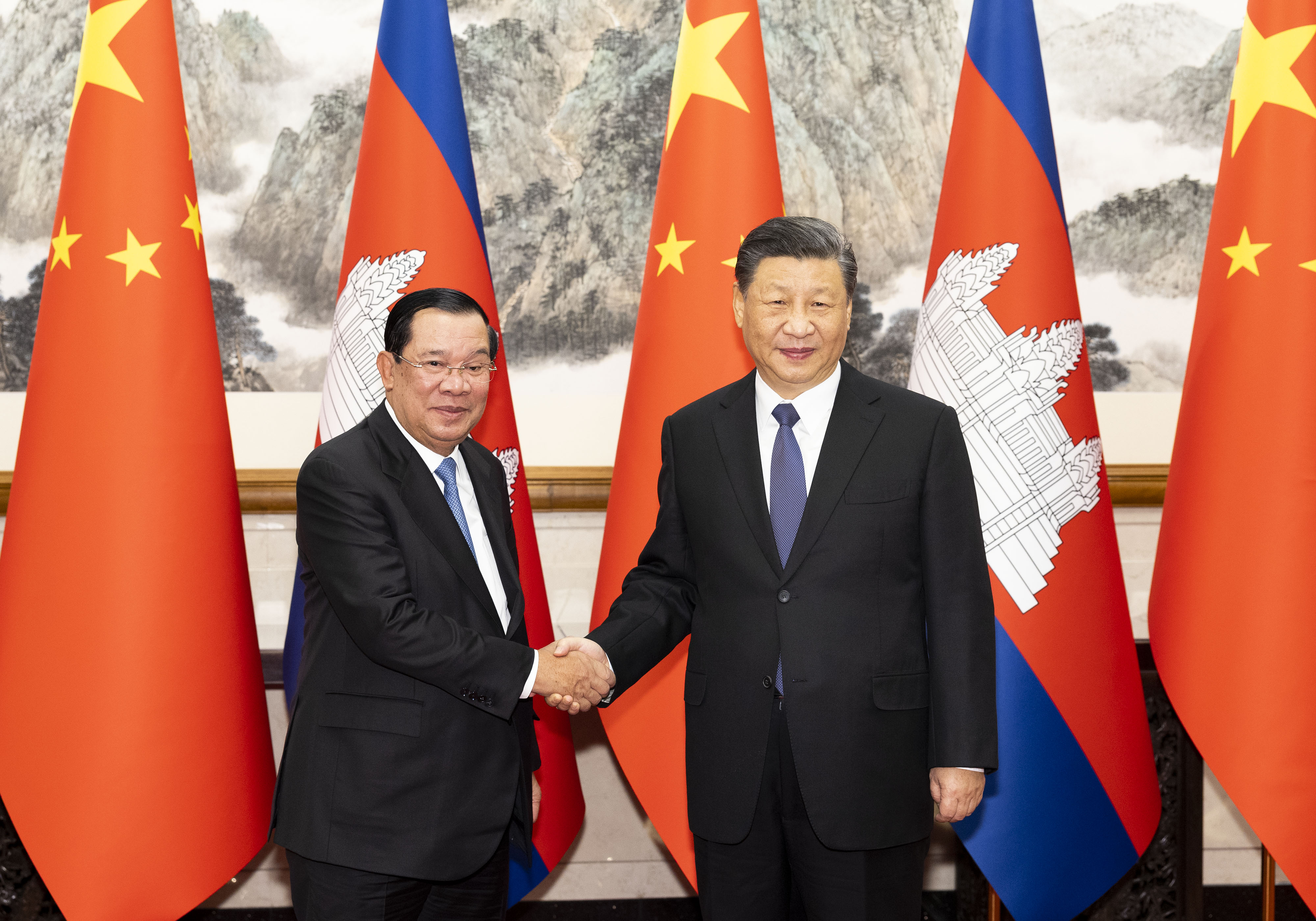
Chinese President Xi Jinping meets with Prime Minister of the Kingdom of Cambodia Hun Sen at the Diaoyutai State Guesthouse in Beijing, capital of China, Feb 10, 2023. Photo:Xinhua
Chinese President Xi Jinping met with visiting Prime Minister of Cambodia Hun Sen on Friday in Beijing. During this visit, the two sides reached a consensus on the China-Cambodia "Diamond Hexagon" cooperation framework, showing that the Belt and Road cooperation between China and Cambodia is more open, higher-quality, more balanced and more sustainable. Specifically, cooperation in the fields of production capacity, energy and agriculture will create more new highlights, benefit more people, and inject strong impetus into regional peace and stability.
China-Cambodia cooperation is in full swing, which has made some American media restless. Worrying that Cambodia and China are getting too close, they try to use the "debt trap" rhetoric to discredit the China-Cambodia high-speed rail cooperation and drive a wedge between the two countries. However, this move will obviously not succeed.
This is not the first time that the US and Western media have concocted the "debt trap" theory to discredit China's cooperation with countries along the Belt and Road. In response to the Sri Lanka crisis and China-Myanmar cooperation projects, some American and Western media are keen to talk about the "debt trap" theory and use this rhetoric to intimidate the countries involved in order to coerce them to draw a line with China.
In a certain sense, the "debt trap" theory politicizes and ideologizes debt based on Western standards and value judgments, and is a replica of typical Western-centric theories. In fact, when China conducts project cooperation with countries along the Belt and Road, it pursues the concept of extensive consultation, joint contribution, and shared benefits, and has never unilaterally imposed its own will on these countries. For example, the high-speed rail cooperation between China and Cambodia adopts the BOT (build-operate-transfer) model, which is not like a simple Western loan model, but an investment-based one that follows the laws of the market.
When analyzing high-speed rail revenues, the West, based on its own development experience, speculates on China's relative revenues in countries along the Belt and Road, which is logically deceptive. This is because high-speed rail income must calculate not only the income from passenger ticket prices and cargo transportation, but should also include the comprehensive income of commercial development along the high-speed railway. The West often only calculates the former, but lacks the analysis and judgment from its own experience for the latter, which is a major flaw.
At the same time, the Western analysis of the debt structure also lacks a reasonable basis. The vast majority of the debts of those developing countries currently facing a "debt crisis," as hyped by the US and the West, come from loans from international multilateral institutions, while loans from China only account for a small proportion of it. Moreover, most of the loans provided by China are in US dollars. If there is a "debt crisis" in Cambodia, it is more likely to be caused by the dollar's interest rate hikes. What's more, Cambodia's current accumulated external debt is $9.579 billion, accounting for about 35 percent of its GDP, which is lower than the debt pressure ceiling (40 percent) set by the International Monetary Fund. In other words, Cambodia has its foreign debt under control.
It should be noted that as the US continues to promote the Indo-Pacific Strategy, the "debt trap" theory has gradually become a discourse trap used by the US and the West to deliberately raise infrastructure standards and discredit the Belt and Road Initiative. However, the Belt and Road projects have not been affected, and China and the countries along the route are jointly adhering to the concept of high standards, benefiting people's livelihood and sustainability, and are promoting the construction of relevant projects with high quality. This shows that the strong endogenous driving force of the Belt and Road Initiative cannot be stopped by the clamor of public opinion in the US and the West.
It is worth mentioning that 2023 is the 10th anniversary of the proposal to jointly develop the Belt and Road Initiative. Over the past 10 years, China and Cambodia have made remarkable achievements in Belt and Road cooperation, which has become a model for the joint construction of the Belt and Road. Whether it is the Golden Port Expressway or the Sihanoukville Special Economic Zone, it has played a positive role in promoting the connectivity of Cambodia and stimulating the development of the local economy.
2023 is also the 65th anniversary of the establishment of diplomatic relations between China and Cambodia and the Year of China-Cambodia Friendship. The joint construction of a community of shared future between China and Cambodia will usher in a new era of construction. At this critical juncture, the latest cooperation between the two countries will surely promote the development of the China-Cambodia community of shared future in the direction of high quality, high level and high standards in the new era. The practice of building a community of shared future between China and Cambodia has proven that the two sides adhere to mutual respect, equal treatment, and win-win cooperation to promote the construction of a new type of international relations. In the new era, the China-Cambodia community with a shared future will only become more stable and solid.
The author is director of the Center for Southeast Asian Studies at the Chinese Academy of Social Sciences in Beijing. opinion@globaltimes.com.cn




